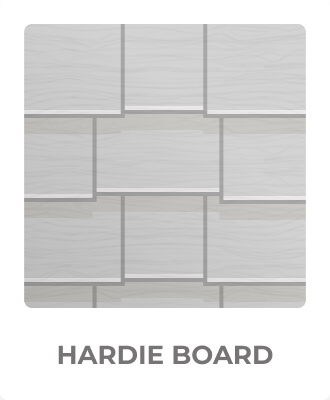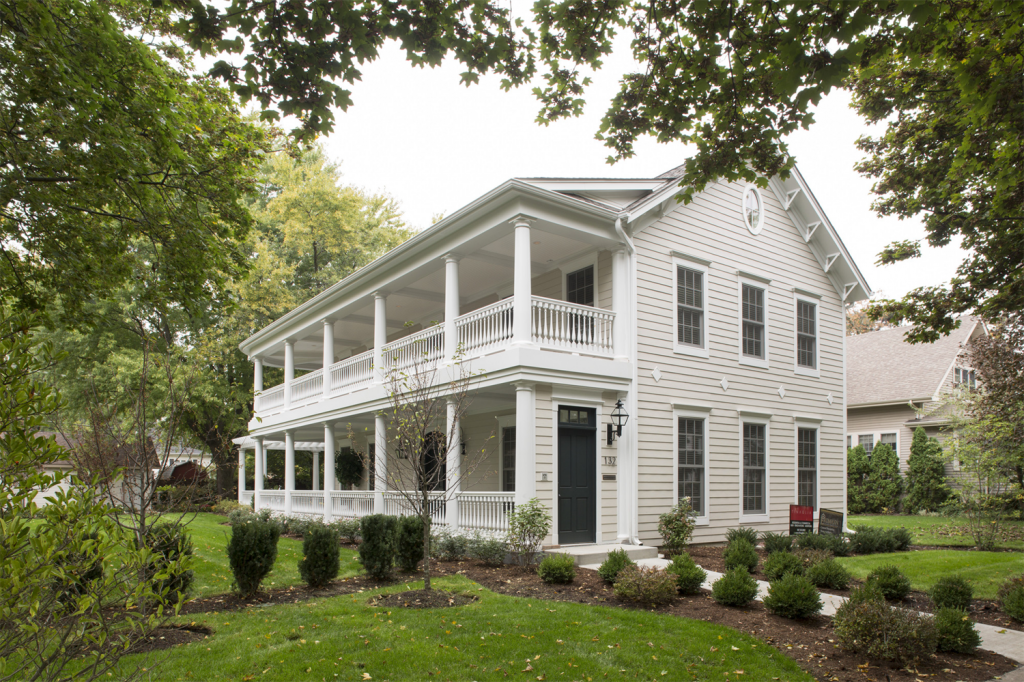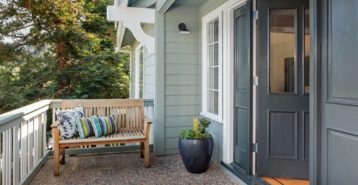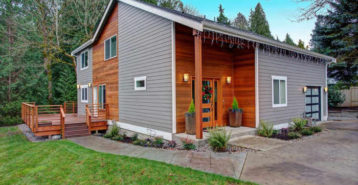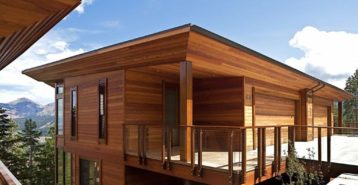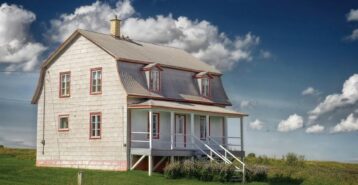James Hardie Siding Installation
If you’re looking to refresh your home’s exterior without breaking the bank, a Hardie board siding installation is a project worth considering. Also known as Hardiplank siding or fiber cement siding, this durable material was created by James Hardie, giving it the name most homeowners recognize today.
What Is Hardie Board?
Hardie board is a versatile type of fiber cement siding made of cement, sand, and cellulose fibers. It is designed to mimic the look of more expensive siding types, such as cedar shingles, stone, or clapboard, at a more moderate price point with added durability.
This siding is a smart investment. A new Hardie board installation can deliver an 84% return on investment for your home’s resale value.
James Hardie Siding Cost
The cost of installing Hardie board siding depends on materials, labor, and your home’s size and design. On average, homeowners can expect the following costs in 2025:
| Cost Component | Price Range |
|---|---|
| Materials (per square foot) | $1.50 to $6.00 |
| Labor (per square foot) | $4.00 to $9.00 |
| Total (per square foot) | $6.00 to $12.00 |
| Total Project (1,500 sq ft home) | $9,000 to $18,000 |
| Total Project (2,500 sq ft home) | $15,000 to $30,000 |
These prices include materials and installation. Your total project cost may be higher if your contractor needs to remove old siding, repair sheathing, or work on a multi-story home.
Factors That Affect Costs
Several factors influence the cost of installing Hardie board siding. Understanding these can help you budget more accurately:
- Home Size and Layout: Larger homes and those with complex designs, gables, or multiple stories require more labor and materials.
- Siding Style: Lap siding, shingles, and specialty panels may cost more than standard options.
- Color and Finish: Premium colors and finishes come at higher price points but may include extended warranties.
- Labor Rates: Siding installation costs vary widely by region.
- Removal of Old Siding: Taking off existing siding and disposing of it adds to the total cost.
- Seasonal Pricing: Scheduling in the fall or off-peak months may lower labor costs.
Hardie Board Installation Process
Understanding what to expect during siding installation can help you feel more confident in your project. While every home is unique, most James Hardie siding installations follow these steps:
- Initial Consultation: A contractor evaluates your home, takes measurements, and discusses style and color options.
- Preparation: Old siding is removed, repairs are made to the sheathing if necessary, and a protective layer such as HardieWrap may be applied.
- Installation: Hardie board panels or shingles are carefully cut and installed. Because of their weight, contractors often use extra workers or lifts to ensure proper placement.
- Finishing Touches: Trim pieces, paint or finish work (if applicable), and caulking are applied for a polished look.
- Cleanup and Inspection: Contractors remove debris, inspect the siding for quality, and review maintenance tips with you.
This process typically takes one to two weeks, depending on the size of your home, weather conditions, and the complexity of your design.
Hardie Board Siding Benefits
Hardie board siding is known for its durability, appearance, and long lifespan. Here are the key benefits:
- Fire Resistance: Made of 90% sand and cement, Hardie board resists fire damage. Some insurers even offer discounts for homes with this siding.
- Weather Resistance: It withstands storms, hail, and high winds without rotting or attracting insects. It’s also ideal for coastal homes exposed to salt spray.
- Long Lifespan: With a life expectancy of 50 years or more, most homeowners will never need to replace it. Many products come with a 50-year limited transferable warranty.
- Versatile Appearance: Hardie board can look like wood lap boards, cedar shingles, or wood shakes, and comes in nearly unlimited color options. Finish warranties typically last 10 to 15 years.
Hardie Board Siding Styles
Hardie board siding comes in a variety of styles to fit your home’s architecture, from modern to traditional. Popular options include:
- Hardie Lap Siding: The most popular style, featuring horizontal laps in many textures and colors.
- Board and Batten: Vertical planks with molding between boards for a rustic or farmhouse look.
- Hardie Textured Panels: Wide panels with modern textures and trims for a contemporary style.
- Hardie Shingles: Resemble cedar or wood shakes but with longer durability.
Hardie Board Siding Weight
Hardie board weighs about 300 pounds per 100 square feet, compared to just 60 to 70 pounds for vinyl siding. This makes installation more labor-intensive and often more expensive. Contractors may need extra workers or lifts, which adds to the overall cost. Shipping and transportation costs may also be higher due to the weight.
Be sure to get at least three to four quotes from local siding contractors to find the best value for your project.
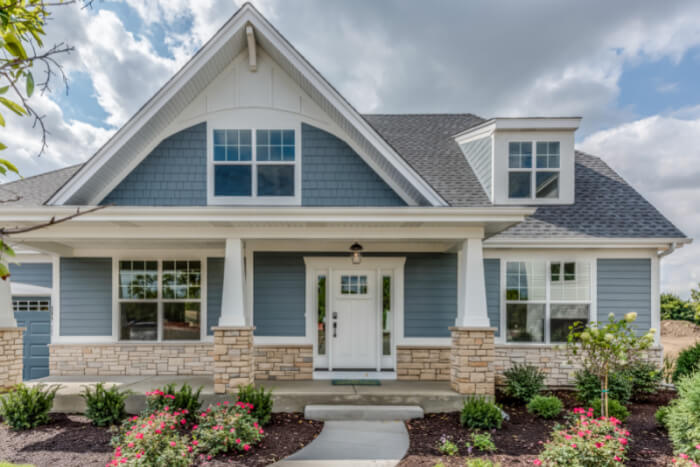
Hardie Board Siding Colors
James Hardie offers a wide variety of siding colors to fit any design style. Homeowners can choose from neutral shades, bold hues, or natural wood tones through the ColorPlus® Technology line.
Popular Color Categories:
- Classic whites and creams
- Warm beiges and taupes
- Cool grays and blues
- Rich greens and browns
- Bold accent colors like red or black
HardieWrap Siding Add-On
HardieWrap is a weather-resistant barrier designed to reduce water and air infiltration. It is installed under the siding, over the sheathing, and helps improve energy efficiency while reducing your home’s environmental footprint.
HardieWrap is sold in rolls (typically 9 feet by 100 to 150 feet) and costs about $200 per roll. Ask your contractor if your home would benefit from this add-on.
Hardie Board Siding vs. Other Siding Types
See our chart below to compare Hardie board to other siding types. While it costs more than vinyl, it offers longer durability and better fire and weather resistance. Compared to wood, it requires much less maintenance.
| Siding Type | Average Cost (per sq ft) | Lifespan | Maintenance | Best Features |
|---|---|---|---|---|
| Hardie Board (Fiber Cement) | $6.00 to $12.00 | 50+ years | Low | Fire- and weather-resistant, wide style variety |
| Vinyl | $3.00 to $8.00 | 20 to 30 years | Low | Affordable, easy to install |
| Wood | $7.00 to $15.00 | 20 to 40 years | High | Natural appearance, classic charm |
| Engineered Wood | $6.00 to $10.00 | 30 to 40 years | Moderate | Lighter weight, durable, more eco-friendly |
Vinyl Siding vs. Hardie Board
When comparing vinyl siding vs. Hardie board, the biggest differences are cost and durability. Vinyl siding is less expensive and easier to install but typically lasts 20 to 30 years. Hardie board costs more upfront but can last 50 years or more with little maintenance. Hardie board is also more resistant to fire, impact, and severe weather.
Alternatives to Hardie Board Siding
If Hardie board isn’t the right fit for your home, there are several alternatives to consider:
- Vinyl Siding: A budget-friendly option with low maintenance and many color choices.
- Wood Siding: More expensive and maintenance-heavy, but offers a timeless, natural look.
- Engineered Wood Siding: Offers similar strength to Hardie board but is lighter and sometimes cheaper.
- Stucco or Stone Veneer: Higher-end alternatives that provide durability and unique style but at a higher cost.
Frequently Asked Questions
Hardiplank Maintenance Tips
Caring for Hardiplank siding helps maintain its beauty and longevity.
- Clean siding every 6 to 12 months. Use a garden hose or low-pressure spray to remove dirt. For stains, scrub gently with mild detergent and a soft brush.
- Clean gutters and downspouts. Prevent water overflow and siding damage.
- Reapply caulking as needed. Use “permanently flexible” caulks to keep moisture out.
- Trim vegetation and shrubs. Keep landscaping clear to avoid damage and moisture issues.
Conclusion: Is Hardie board siding right for your home?
Hardie board siding is a smart investment for homeowners who want long-lasting protection and timeless style. While it costs more upfront than vinyl, it offers better durability, fire resistance, and resale value, making it one of the top mid-priced home improvement projects available today.
Whether you’re upgrading for curb appeal, energy efficiency, or resale value, the key to success is choosing the right contractor. Modernize can connect you with pre-vetted local siding professionals, so you can compare quotes, explore style options, and feel confident in your siding project from start to finish.
Compare top-rated siding pros in your area.
Read real homeowner reviews, explore qualifications, and view promotions. Modernize makes it easy to browse professionals and find one that will be perfect for your project.
